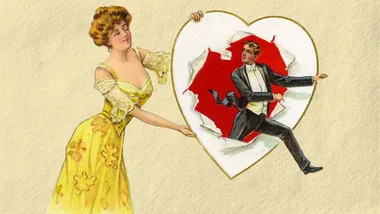If you’ve ever dabbled into the realm of psychology, you will have heard of the term ‘attachment styles’ at some point. Attachment theory was pioneered by British psychiatrist John Bowlby and American psychologist Mary Ainsworth in the late 50s and aims to explain our behaviour when in love.
What is attachment theory?
Ainsworth and Bowlby hypothesised that our behaviour in relationships is a result of our interactions with our primary caregivers as children. Your ‘attachment style’ therefore depends on whether your caregiver gave you a secure environment, an unpredictable environment or a mixture of both.
What do attachment styles tell us about our relationships?
Understanding your attachment styles can help you to understand your own or your partner’s behaviour when in a relationship. Not only this, but it can help you identify your needs for a future relationship too.

What are the four attachment styles?
Through their research, Ainsworth and Bowlby identified four ‘attachment styles’ which are: anxious, avoidant, disorganised and secure.
Anxious
The anxious attachment style is marked by a deep fear of abandonment, issues with jealousy and a constant need for reassurance.
“This attachment style forms from an inconsistency in how a person’s needs were met as a child from primary caregivers,” psychologist Jocelyn Brewer says.
As a result of this, an anxious attachment can develop hypervigilance in their relationships as well as a tendency to cater to the other person.
“When an anxious attachment receives a mismatched level of investment from a partner, they can quickly internalise the anxiety that this produces” Jocelyn adds.
Avoidant
The avoidant attachment style is quite the opposite of the anxious attachment. Rather than crave intimacy, an avoidant values their freedom and independence to the point where intimacy can feel threatening to that. In response to this, they tend to avoid intimate, close relationships.
“Avoidants usually have a positive regard of themselves and a less positive regard of others,” Jocelyn explains. “They’ve usually learned to foster independence most likely because their needs have been minimised by their primary caregiver as a child.”
Avoidants in relationships may in turn minimise their own partner’s feelings and withdraw or even end relationships to reclaim their freedom.
Disorganised
The disorganised attachment style, and also sometimes referred to as the fearful-avoidant attachment, is a combination of both anxious and avoidant.
This particular attachment style can stem from abuse or trauma in your early years. This may manifest as being distrustful and controlling in adult relationships as well as not feeling worthy of being loved.
“There is a combination of a fear of being hurt mixed with a desire to please, which can create mixed signals,” Jocelyn says.
Secure
A secure attachment style are people whose needs were consistently met and as a result, tend to form safe, stable relationships as adults. They’re comfortable being alone but can also thrive in close relationships.
“As adults, people with a secure attachment style are able to talk things through and be honest and transparent in a relationship,” Jocelyn explains. “That doesn’t mean they don’t have conflict, it’s that you have the skills to deal with differences without being fearful or dismissive.”



